Table of Contents (Quickly Jump To Information)
I developed this homemade fermented ketchup recipe to satisfy my love for ketchup.
It’s true, I love ketchup, and I’m sure you do too.
That’s probably why you’re here, right?
What I don’t love is all the corn syrup and other artificial stuff in that popular, processed ketchup you see at the store.
I also love fermenting as a way to be healthier, and try to ferment as much as possible.
So, it seems natural that I paired homemade ketchup with a fermented ketchup recipe.
And the best part?
This homemade fermented ketchup recipe is a GREAT way to introduce fermented foods to your children.
Have you every met a child that DIDN’T like ketchup?
My homemade fermented ketchup is an easy recipe – you can make it in less than an hour – and so flavorful you’ll love it.
Now here’s the thing about this homemade fermented ketchup recipe.
It doesn’t taste like the homogenized, boring store bought stuff. Nope!
That’s probably the biggest advantage of making homemade fermented ketchup – at the end of the recipe, you’ll have a condiment with layers of deep, robust flavors.
It’s really quite amazing, and one bite will be slightly spicy, while the next might be peppery.
Although the texture is a close relative, the flavors are deeper, and each bite is slightly different, making a boring condiment into a gourmet treat.
My homemade fermented ketchup is heartier, with a fuller texture that really accompanies a hamburger, rather than slopping it just to add moisture.
And the fermenting? Just deepens the flavors while creating a healthy, probiotic food for your childrens’ tummies.
Making my own homemade fermented ketchup recipe has let me swap out processed foods with a healthier alternative while still remaining in my family’s good graces.
Once you start eating homemade fermented ketchup, you won’t want to go back.
I haven’t!
You can use it in cooking just like regular ketchup.
Here’s how you make it!
How to Make Homemade Fermented Ketchup
To make my homemade fermented ketchup recipe you will need these ingredients:
12 oz tomato paste
¼ cup whey or fermented vegetable juice
1/8 tsp red pepper
¼ tsp black pepper
½ tsp all spice
1 tbsp Himalayan salt
2 garlic cloves minced & juices released
1 tbsp organic honey
Basic directions:
My homemade fermented ketchup recipe makes about 1 pint of ketchup, and it can easily be doubled.
Grab a wide-mouthed mason jar and mix the tomato paste, honey, and garlic cloves until the ingredients are thoroughly combined.
Next, whisk in the whey or fermented vegetable juice, Himalayan salt, allspice, red pepper, and the black pepper until all of the ingredients are evenly mixed together.
Your homemade ketchup should be smooth and an even consistency.
Hurrah! At this point, you’ve officially made homemade ketchup!
That was easy, like I promised!
Now on to fermenting!
To ferment your homemade ketchup, you’ll need an airlock and lid to seal the mason jar.
I’m particular about using these tools because creating the right environment for your beneficial bacteria to grow is incredibly important.
The airlock lets air leave, but not enter. If you’re a little unsure about fermenting, you’ll love my guide to fermented vegetables.
After you’ve sealed the mason jar, let your homemade ketchup recipe ferment in a warm area away from sunlight. I let mine sit in a cupboard out of direct sun.
Let it ferment for 2-3 days or until it’s fermented to your personal taste.
When the ketchup is fermented, change out the top with a regular mason jar top, and store in your fridge. It will last for months, but it’s so tasty, I think you’ll find yourself eating it much sooner.
Voila! You’ve just made your own homemade fermented ketchup.
Kitchen notes:
A note about starter cultures
My homemade fermented ketchup recipe differs from other ketchup recipes because you will use a starter culture, like whey or fermented vegetable juice, to kick start the fermenting process.
While you can use a pre-packaged starter culture, I have a lot of whey (from cheese making) and fermented vegetable juice floating around my home, so that’s what I use.
Whey is mild and you won’t taste it. You CANNOT use whey from a health food store, it’s not the same thing, and at any rate, it’s so processed, it will never be able to ferment anything.
If you use whey, use the stuff from making cheese.
Fermented vegetable juice is also a good way to kick start your fermented ketchup.
Although whey and fermented vegetable juice are not the same thing, they both serve the same purpose of introducing beneficial bacteria into your homemade fermented ketchup recipe and will allow the beneficial bacteria to grow.
A note about kefir
While some homemade fermented ketchup recipes out there recommend using milk kefir as a starter, I don’t think it’s a good idea.
Milk kefir is a thickened form of milk, and after the milk has transformed into kefir, it resembles fizzy sour cream.
I don’t think you’ll be happy with the results, and whey or fermented vegetable juice are better options.
A note about salt
When it comes to fermented foods, use only Himalayan salt in your fermenting jar.
Himalayan salt is full of wonderful minerals, and you can be sure your giving your beneficial bacteria the best environment to proliferate.
Stay away from iodized salt (regular table salt) because it will throw off your beneficial bacteria. Table salt has ruined many a fermented ketchup.
A note about honey
Yes, I have a rule about honey too. I love this homemade fermented ketchup recipe so much that I want it to be something you can enjoy for years to come!
So that’s why I have some of these rules about the ingredients.
I only recommend organic honey in this homemade fermented ketchup recipe.
Regular honey from the grocery store is usually sourced internationally, from China for example, and not only has had all the pollen removed from it, but is likely little more than glorified corn syrup.
Studies on honey obtained from grocery stores showed it was unhealthy, and you’ll be making a better food for your family if you just stay away from it.
I buy my honey at Thrive Market, where it’s ethically sourced.
To get the full benefit of honey and bee pollen, stick with organic.
I’d like to hear from you!
I know you love ketchup (why else would you be here!) but do you think you’ll try making my homemade fermented ketchup recipe? Email me at editor@thefrugalchicken.com or comment below!
Maat van Uitert is a backyard chicken and sustainable living expert. She is also the author of Chickens: Naturally Raising A Sustainable Flock, which was a best seller in it’s Amazon category. Maat has been featured on NBC, CBS, AOL Finance, Community Chickens, the Huffington Post, Chickens magazine, Backyard Poultry, and Countryside Magazine. She lives on her farm in Southeast Missouri with her husband, two children, and about a million chickens and ducks. You can follow Maat on Facebook here and Instagram here.

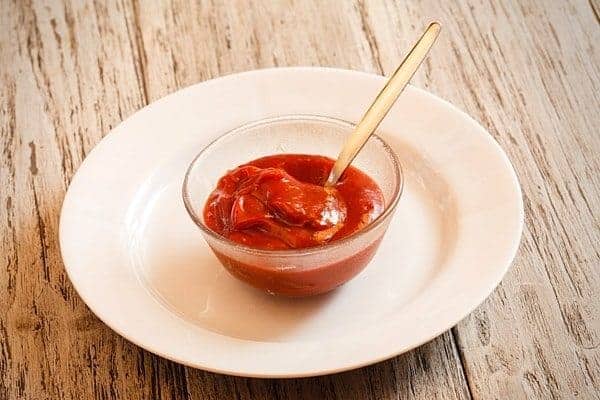
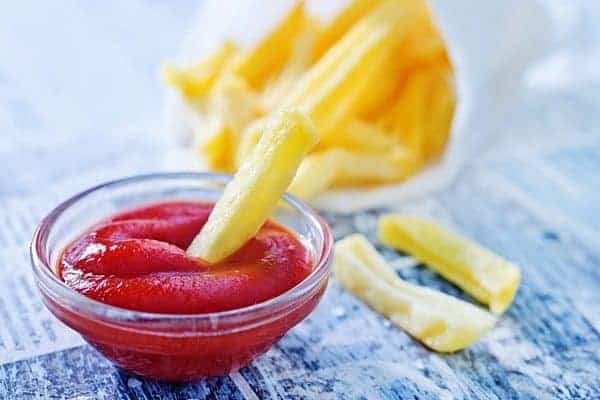
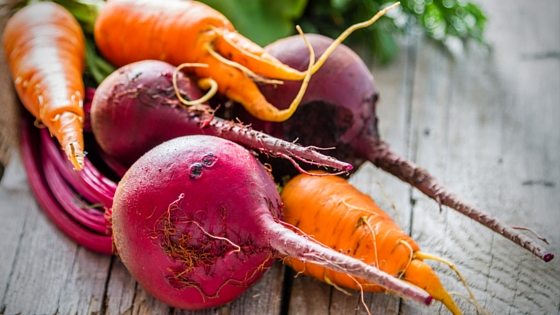


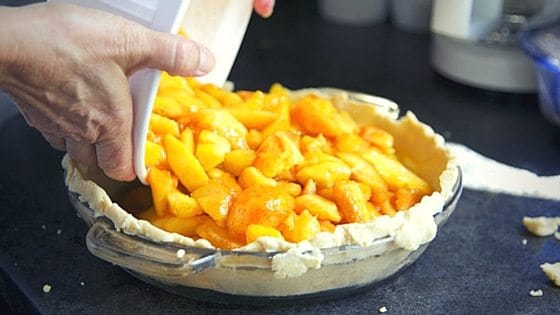

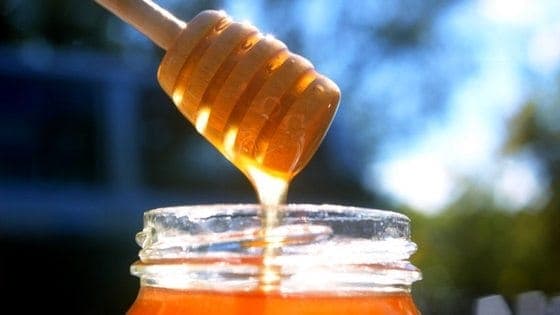
The only thing I don’t like about this post is that you have a dig at China, seems to be a national sport these days, hate to tell you this but, the US, Canada, UK and Europe are just as bad with their over prosessing, addition of chemicals, misleading label long, oh, and calling sugar water honey, please, don’t ruin a blog I enjoy reading by joining the xenophobe crowd
Thanks for your comment. Your best bet to avoid over processed honey is to buy organic, regardless of country of origin.
I would like to make your homemade ketchup but in the directions it says to add vinegar, but there is no vinegar amount in the ingredients. I do not know how much to add or what kind?
Hi Virginia, thank you for pointing that out to me. It was an editorial error. There is no vinegar in it. The perils of being a one woman army!
Thank you so much for your reply to my question.
You’re welcome.
I am unfamiliar with an airlock what is it and where can I get it
Hi Darlah, an airlock is something that allows oxygen to escape from the mason jar, but doesn’t allow it back in. Here’s the fermenting kit I use, and it comes with an airlock. http://amzn.to/24nn6Si (affiliate link) I like this kit because it’s easy to assemble and it comes with good directions. Hope this helps.
Can you make whey using milk bought at the store? What is the ratio of vinegar and milk, to get whey?
Can you further explain the “fermented vegetable juice”? Is this something you’ve made? Or maybe the brine left after a jar of fermented vegetables are eaten? Thank you,
I meant the brine left over after a previous ferment. 🙂